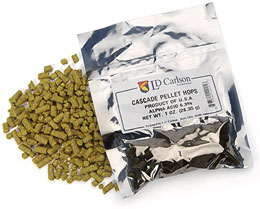 Hops play a pivotal role when making beer, and there are a wide variety of beer hops from which to choose: Casade, Fuggles, Chinook, Willamette, Nugget., Tettnang, Perle… The list goes on-and-on as to how many types of beer hops can be found on the market these days. So how does one choose?
Hops play a pivotal role when making beer, and there are a wide variety of beer hops from which to choose: Casade, Fuggles, Chinook, Willamette, Nugget., Tettnang, Perle… The list goes on-and-on as to how many types of beer hops can be found on the market these days. So how does one choose?
In general, hop varieties fall in two major groups: aroma hops and bittering hops. Many of these varieties can serve double-duty, meaning that they can act as both an aroma hop and a bittering hop. Some tips for selecting the best hops for making premium quality beer are given below:
- IBU or International Bitterness Units are a measure of the bitterness levels of a beer. The alpha-acid percentage in a hop is directly related to this bitterness level. Hence, select the bittering hops that has the right alpha-acid percentage for the type of beer your are making.
- Dual purpose hops generally have intermediate or medium alpha-acid content and serve a dual purpose; they provide good aroma and satisfactory bitterness at the same time.
- Aromatic hops have significantly lower alpha-acid percentages. The aromas range from floral to grassy and from citrus to perfume. Some smell quite subtle while others may be very distinct. So in order to make the beer of your choice in your home brewery, you should select the hops carefully.
- Rather than using just one variety of hops, homebrew recipes often use a combination of them. While blending, you must select hops that complement each other.
The essential oils present in the lupulin glands of aroma hops are responsible for the rich aroma and flavor produced by these hops. Myrcene, caryophyllene, farnesene and humulene are the major constituents of essential oils. The ratio of these components determines the type and the quality of the aroma produced by the hops.
________________________________________________________
Read More About Hops And Other Winemaking Topics,
FREE EMAIL NEWSLETTER:

